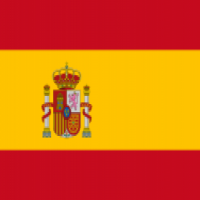Summary:
A team of Spanish researchers specialised in supramolecular chemistry and parasitology has developed a new polymer useful as a general-purpose artificial vector for delivery of genetic material (DNA and RNA). The compound is thermally and chemically stable, non-toxic and effective for transfection of eukaryotic cells, single-cell parasites and bacteria. The team intends to license its use to companies interested in exploiting transfection technology for biomedical and biotechnology applications.
Description:
The delivery of exogenous nucleic acids into eukaryotic cells is called transfection and is essential for cell and molecular biology research and biotechnology. It is also widely regarded as a promising approach for the treatment of genetic diseases and cancer.
Chemical vectors are an improved alternative to physical and viral methods of transfection, mainly because they are safer, cheaper, more reproducible, and do not present significant DNA size limits. To date however transfection efficiency has been their main limitation.
The newly developed reagent consists of a polymeric material based on repeating squaramide compounds. These polymers strongly bind and fold polyanionic compounds such as nucleic acids (DNA and RNA) in a wide range of sizes. This packaging protects nucleic acids from degradation and facilitates delivery across biological membranes. This, combined with the effective release of nucleic acids within cells, greatly increases the efficiency of transfection in a wide variety of organisms.
The developed polymer outperforms commercially available chemical vectors, and has a wider field of use. It is effective in organisms where existing reagents or methodologies perform poorly or simply do not work. Moreover, the results obtained in gene editing, virus reconstitution and in vivo transfection assays highlight its potential for developing future biomedical applications.
This reagent has been developed as a multi-centre project (Spain and UK), involving researchers with expertise in the areas of chemical synthesis, biochemistry, molecular biology and parasitology. The polymer, as a product for transfecting cells, is in the pre-commercialisation phase. The team is currently collaborating with different companies and academic collaborators to validate the product in a range of specific biomedical applications.
The team aims to expand collaborations with other companies in the healthcare sector, where transfection efficiency currently limits biomedical research and medical applications. Companies interested in testing the product will be offered a material transfer and confidentiality agreement, with subsequent negotiation of a licensing agreement if the compound proves to be superior to their current methodology.
Type (e.g. company, R&D institution…), field of industry and Role of Partner Sought:
The main goal is to explore and characterize the reagent as a chemical vector with biomedical applications. To this end, the research team are looking for companies interested in evaluating the potential of new transfection agents to improve their experimental outcomes.
A two-phase collaboration is offered: a first phase of testing and validation of the product, non-commercial, under a material transfer and data confidentiality agreement; and a second phase of commercial use of the product. On the assumption that the results of the first phase are satisfactory, this would lead to a royalty-bearing licensing agreement.
Stage of Development:
Prototype available for demonstration
Comments Regarding Stage of Development:
Proof of concept experimentation has been carried out to investigate the potential use of pASQUA as a non-viral vector in the laboratory. Results have validated this chemical vector as a powerful tool for biomedical research, with multiple potential biotechnological applications. These include gene editing, vaccine delivery and gene therapy.
IPR Status:
Patent(s) applied for but not yet granted
Comments Regarding IPR Status:
European Patent pending
External code:
TOES20211014002








